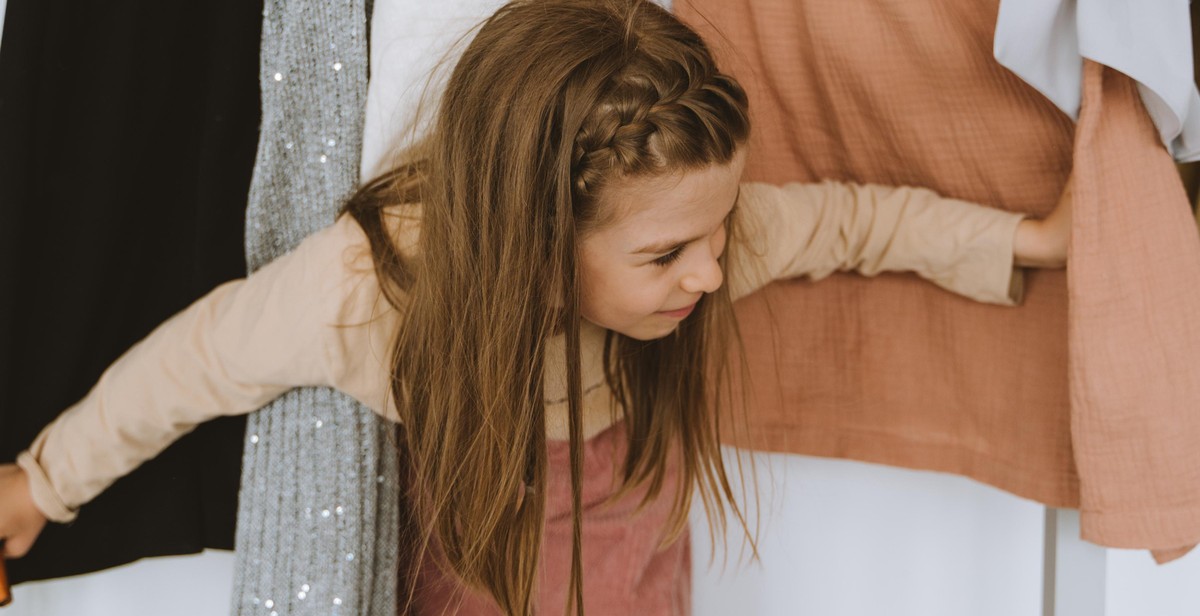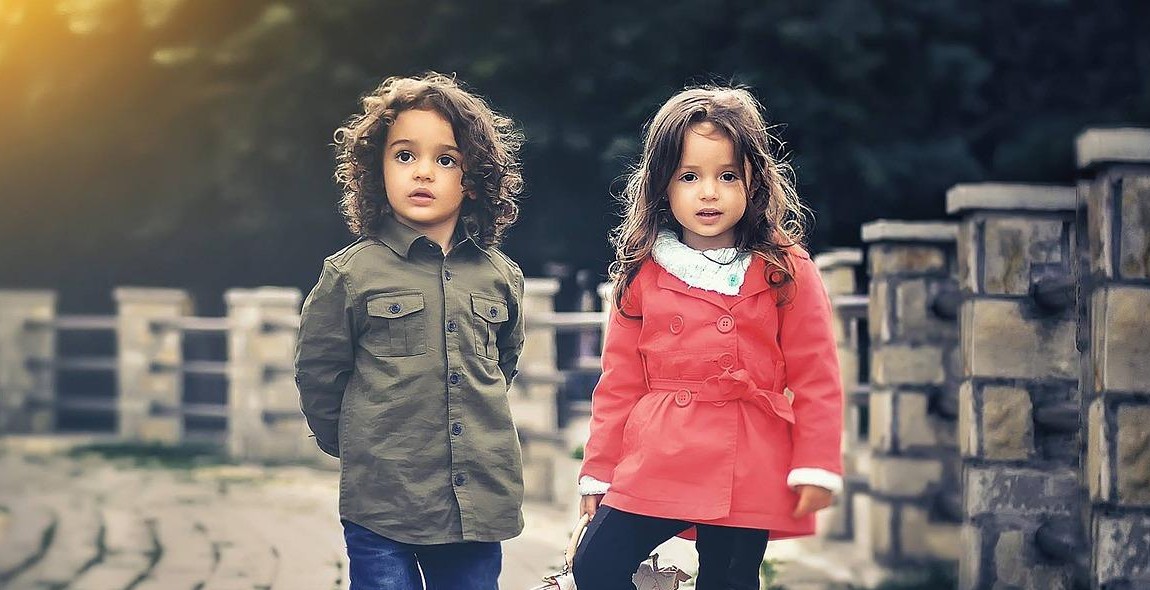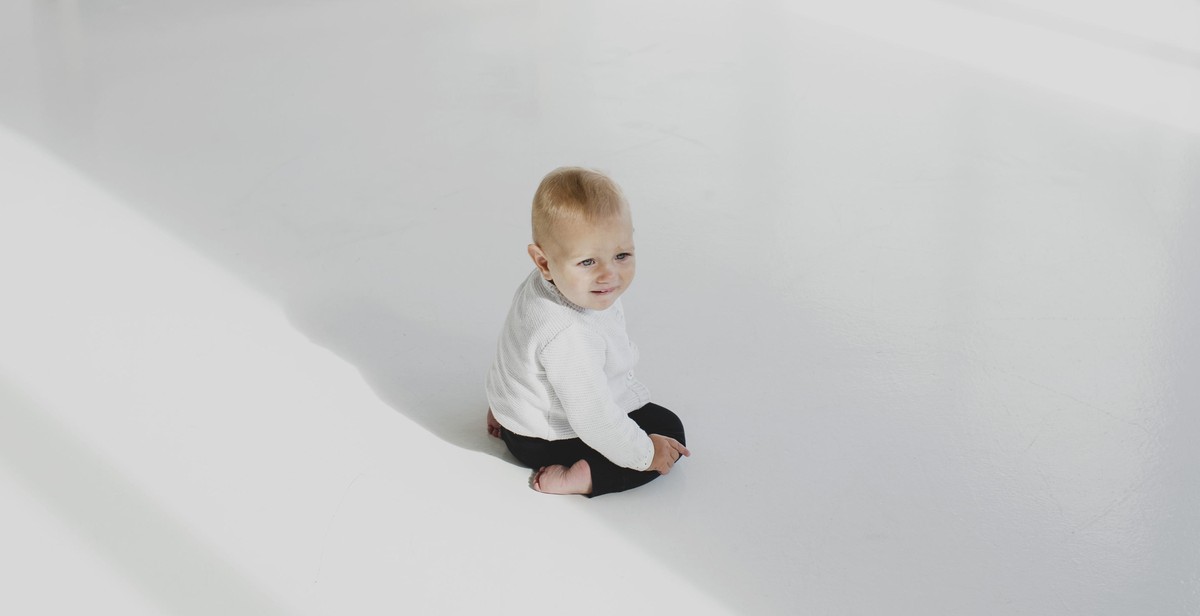How to Develop a Minimalist Wardrobe for Kids: Simplifying Children’s Clothing Choices
As parents, we often find ourselves overwhelmed with the amount of clothing our kids have. From hand-me-downs to impulse buys, it’s easy for their wardrobes to become cluttered and disorganized. However, developing a minimalist wardrobe for your kids can simplify their clothing choices and make getting dressed a stress-free experience.
Why a Minimalist Wardrobe for Kids is Important
There are several reasons why a minimalist wardrobe for kids is important. First and foremost, it promotes sustainability. By reducing the number of clothes your child has, you’re reducing textile waste and helping to create a more eco-friendly world. Additionally, a minimalist wardrobe can save you time and money. With fewer pieces to choose from, your child can easily mix and match outfits, and you won’t have to constantly replace outgrown or worn-out clothing.
Another important benefit of a minimalist wardrobe is that it can teach your child about the value of simplicity and mindful consumption. By focusing on quality over quantity and choosing versatile pieces that can be worn in a variety of settings, you’re helping your child develop a sense of style that is both practical and sustainable.
In this article, we’ll provide you with practical tips and strategies for developing a minimalist wardrobe for your kids. From choosing the right pieces to organizing your child’s closet, we’ll help you simplify your child’s clothing choices and create a stress-free getting-dressed routine.

Step 1: Assess Current Wardrobe
Before you start building a minimalist wardrobe for your kids, it is essential to evaluate your child’s current wardrobe. This step will help you identify the clothes your child already has, what they need, and what to keep or donate/sell.
How to Evaluate Your Child’s Current Wardrobe
When assessing your child’s wardrobe, consider the following:
- Age appropriateness: Check if the clothes still fit your child’s age and size. If not, it’s time to let go.
- Wear and tear: Look for signs of wear and tear, like holes, stains, or fading. Clothes that are too worn out should be donated or thrown away.
- Seasonal relevance: Determine if the clothes are appropriate for the current season or if they can be used all year round.
- Style and preference: Check if the clothes match your child’s style and preference. If they don’t, consider donating or selling them.
What to Keep and What to Donate or Sell
After evaluating your child’s wardrobe, you can decide what to keep and what to donate or sell. Keep the clothes that fit well, are in good condition, and your child loves to wear. Donate or sell clothes that are too small, worn out, or not suitable for your child’s style and preference.
You can sell clothes in good condition through online marketplaces or consignment stores. Donating clothes to charity is also an excellent way to declutter and help others in need.
| What to Keep | What to Donate or Sell |
|---|---|
| Clothes that fit well | Too small clothes |
| Clothes in good condition | Worn out clothes |
| Clothes that match your child’s style and preference | Clothes not suitable for your child’s style and preference |
By assessing your child’s current wardrobe, you can start building a minimalist wardrobe that works for them. This step will save you time, money, and space while simplifying your child’s clothing choices.

Step 2: Define Your Child’s Style
Once you have decluttered your child’s wardrobe and removed all the unnecessary items, it’s time to define their style. This will help you make better purchasing decisions and ensure that you are only buying clothes that your child will wear and love.
How to Identify Your Child’s Preferred Style
Every child has their own unique personality, and their clothing should reflect that. Here are some tips on how to identify your child’s preferred style:
- Observe their current wardrobe and take note of the items they wear the most. This will give you an idea of their preferred colors, patterns, and styles.
- Take your child shopping and let them pick out a few items. This will give you an idea of their personal taste and style preferences.
- Ask your child what they like and dislike about their current clothes. This will help you understand their preferences and avoid buying items they won’t wear.
Tips for Choosing Timeless and Versatile Pieces
When building a minimalist wardrobe for your child, it’s important to choose timeless and versatile pieces that can be worn in multiple ways. Here are some tips:
- Stick to neutral colors like black, white, gray, and navy. These colors are timeless and can be mixed and matched with ease.
- Choose classic styles like button-down shirts, polo shirts, and jeans. These items are versatile and can be dressed up or down depending on the occasion.
- Invest in quality items that will last longer and withstand everyday wear and tear. This will save you money in the long run and reduce the need for frequent replacements.
| Recommended Items | Not Recommended Items |
|---|---|
| Plain t-shirts | Trendy graphic tees |
| Dark-wash jeans | Brightly colored pants |
| Cotton dresses | Fancy party dresses |
By following these tips and identifying your child’s preferred style, you can create a minimalist wardrobe that is both functional and stylish.
Step 3: Create a Capsule Wardrobe
Now that you’ve decluttered and assessed what your child already has, it’s time to create a capsule wardrobe. A capsule wardrobe is a collection of essential clothing items that can be mixed and matched to create different outfits. The idea behind it is to have fewer clothes that can be worn in different ways, making it easier to get dressed and reducing decision fatigue.
What is a Capsule Wardrobe and Why is it Beneficial?
A capsule wardrobe is a minimalist approach to fashion that focuses on quality over quantity. By having a smaller, curated selection of clothes, you can simplify your child’s wardrobe and reduce the amount of time and money spent on buying and maintaining clothes. It also helps to teach kids about the value of taking care of their belongings and making intentional choices when it comes to their fashion choices.
Creating a capsule wardrobe for your child can also reduce stress and decision fatigue. By having a limited number of options, it’s easier to choose what to wear each day and avoids the overwhelm of a cluttered closet.
How to Build a Capsule Wardrobe for Kids
When building a capsule wardrobe for your child, start with the basics. These are the essential items that can be worn with anything, such as plain t-shirts, leggings, and jeans. Next, add in a few statement pieces, such as a dress or a fun printed shirt, to add some personality and variety to the wardrobe.
It’s important to choose quality over quantity when it comes to building a capsule wardrobe. Look for clothes made from durable materials that can withstand wear and tear. Consider investing in items that can be worn for multiple seasons, such as a lightweight jacket or a versatile pair of shoes.
Here is a sample capsule wardrobe for a child:
| Item | Quantity |
|---|---|
| Plain t-shirts | 3 |
| Jeans | 2 |
| Leggings | 2 |
| Dress | 1 |
| Button-up shirt | 1 |
| Sweater | 1 |
| Lightweight jacket | 1 |
| Versatile shoes | 1 |
Remember, the goal of a capsule wardrobe is to simplify your child’s closet and make getting dressed easier. Don’t be afraid to experiment and find what works best for your child.
Step 4: Shop with Purpose
Now that you have purged your child’s wardrobe and determined their clothing needs, it’s time to shop with purpose. Here are some tips for finding quality and sustainable clothing:
How to Shop for Your Child’s Minimalist Wardrobe
- Make a list of the items your child needs before going shopping. Stick to the list and avoid impulse purchases.
- Choose quality over quantity. Invest in well-made pieces that will last longer and save you money in the long run.
- Look for versatile pieces that can be mixed and matched to create multiple outfits.
- Consider second-hand options such as thrift stores, consignment shops, and online marketplaces to reduce waste and save money.
Tips for Finding Quality and Sustainable Clothing
When shopping for your child’s minimalist wardrobe, it’s important to choose clothing that is both high-quality and sustainable. Here are some tips to help you find the best options:
| Tips | Description |
|---|---|
| Look for organic and natural fabrics | Choose clothing made from organic cotton, bamboo, linen, or other natural fibers that are free from harmful chemicals and pesticides. |
| Check the labels | Look for clothing that is made in a responsible and ethical way, with fair labor practices and environmentally friendly production methods. |
| Support sustainable brands | Research and support brands that prioritize sustainability, such as those using recycled materials or reducing their carbon footprint. |
| Avoid fast fashion | Avoid clothing from fast fashion brands, which are known for their low-quality, disposable clothing and unethical business practices. |
By shopping with purpose and choosing quality, sustainable clothing, you can help your child develop a minimalist wardrobe that is both functional and environmentally friendly.
Step 5: Maintain and Update the Wardrobe
Creating a minimalist wardrobe for your kids is just the beginning. To ensure its longevity and effectiveness, it is crucial to maintain and update it regularly.
How to Care for Your Child’s Minimalist Wardrobe
Proper care is essential to ensure that minimalist wardrobes last longer. Here are some tips to maintain your child’s minimalist wardrobe:
- Follow the care instructions on the label of every clothing item.
- Wash clothes only when necessary and use gentle detergents.
- Hang clothes to dry instead of using a dryer.
- Store clothes in a cool, dry place to avoid damage from moisture and pests.
- Regularly inspect the wardrobe for wear and tear and repair or replace damaged items.
When and How to Add New Pieces
Minimalist wardrobes require regular updates to ensure that your kids have the clothes they need for different seasons and occasions. Here’s how to add new pieces:
- Assess your child’s current wardrobe and identify any gaps.
- Choose versatile pieces that can be mixed and matched with other items in the wardrobe.
- Opt for high-quality items that will last longer and save you money in the long run.
- Stick to a color palette that complements the existing wardrobe.
- Donate or sell any clothes that no longer fit or serve a purpose in the wardrobe.
| Benefits of Maintaining a Minimalist Wardrobe |
|---|
| 1. Saves time and money by reducing the need to constantly shop for new clothes. |
| 2. Promotes sustainable fashion by reducing waste and consumption. |
| 3. Teaches kids to value quality over quantity and appreciate the clothes they have. |
By maintaining and updating your child’s minimalist wardrobe, you can simplify their clothing choices and promote a more sustainable lifestyle.

Conclusion
Developing a minimalist wardrobe for kids may seem like a daunting task, but it is a worthwhile endeavor that can simplify clothing choices and reduce clutter in your home. By following the tips outlined in this article, you can create a wardrobe that is both functional and stylish.
Remember the Four Rs
When building a minimalist wardrobe for your kids, it’s important to keep the four Rs in mind: reduce, reuse, repurpose, and recycle. By reducing the number of clothes your kids own, you can simplify their choices and reduce clutter in your home. Reusing and repurposing clothes can save money and reduce waste, while recycling clothes that are no longer needed can help reduce your environmental impact.
Invest in Quality Pieces
While it may be tempting to buy cheap, trendy clothes for your kids, investing in quality pieces can save you money in the long run. High-quality clothes are often made from durable materials that can withstand multiple washings and wearings, meaning you won’t have to replace them as frequently.
Get Your Kids Involved
Finally, it’s important to involve your kids in the process of developing a minimalist wardrobe. By letting them choose their own clothes and encouraging them to take care of their belongings, you can instill a sense of responsibility and ownership in them.
| Reduce | Reuse | Repurpose | Recycle |
|---|---|---|---|
| Limit the number of clothes your kids own | Pass clothes down to younger siblings or friends | Turn old clothes into rags or household items | Donate clothes to charity or recycle them |
| Stick to a neutral color palette | Buy clothes that can be worn in multiple seasons | Create new outfits by mixing and matching clothes | Participate in clothing swaps or secondhand sales |
| Choose versatile pieces that can be dressed up or down | Repair clothes instead of throwing them away | Transform old clothes into new pieces |
By following these tips and incorporating them into your family’s lifestyle, you can create a minimalist wardrobe for your kids that is both functional and stylish.
